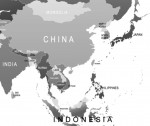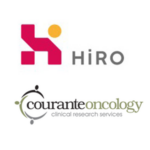As one of the fastest developing regions in the world, Asia’s strong economic growth, coupled with its burgeoning middle class, has led to greater demand for better healthcare service. Over the next five years, healthcare spending in both the public and private sectors is expected to increase throughout Asia (see Table I).
| Country | Annual Growth Rate | Healthcare Spending |
| China | 12% | $900 billion |
| Indonesia | 8% | $24 billion |
| Thailand | 8% | $19 billion |
| Singapore | 9% | $9.5 billion (by 2020; $6.5 billion in 2015) |
| Table I. Projected healthcare spending by 2018. | ||
One of the driving forces behind the demand for increased healthcare spending is the soaring rate of cancer in Asia. Asia is home to 60% of the world’s population and nearly half of the global burden of cancer. China itself bears 23% of all global cancer cases, which by far the highest incidence of any country in the world. The number of new cancer cases per year in Asia is projected to increase from 6.8 million cases in 2012 to 10.9 million cases in 2030, while the number of cancer mortalities per year will increase from 4.5 million in 2012 to more than 7.6 million by 2030.
Due to the differing levels of development across the region, Asian countries face a wide variety of cancers. Both lifestyle cancers that are associated with the wealthy as well as infection-based cancers that mainly affect the poor are common across Asia. Out of all cancer cases in Asia, the most common types are the following:
- Lung—15.8%
- Stomach—10.7%
- Breast—9.3%
- Liver—9%
- Colorectal—8.9%
In more developed countries and cities within Asia, lifestyle habits such as heavy alcohol and tobacco consumption, physical inactivity, and a growing elderly population have led to increased rates of lung, breast and colorectal cancers. Lung cancer especially has become one of the leading causes of death for many Asian nations. Lung cancer rates in Asia are expected to increase even further due to continued tobacco use and increased pollution.
In less developed nations and rural regions on the continent, chronic infections of hepatitis and helicobacter pylori are major contributing factors to the high rates of liver and stomach cancer, respectively. In fact, Asia has the highest rates of incidence and mortality for liver and stomach cancers in the world. Out of the 800,000 new liver cancer cases in 2012, China alone comprised 50% of all new liver cancer cases. Similarly, out of the nearly 1 million new stomach cancer cases in 2012, 50% of them originated from East Asian nations.
Cancer Treatment
The governments in Asia have taken steps to address the growing burden of cancer by promoting healthy lifestyles, implementing alcohol and tobacco control measures, providing hepatitis and HPV vaccines, increasing cancer screening services, and strengthening the cancer healthcare infrastructure. Recently, China implemented a public smoking ban; however, demand for drugs and cancer treatment services is still expected to rise significantly in China, regardless of the smoking ban’s efficacy.
As for treatment measures, chemotherapy remains the main form of cancer treatment, although other types of cancer treatments such as surgery, radiotherapy and hormone therapy are also common. More advanced therapies, such as immunotherapies, have started to penetrate the market as well. However, payment for these cancer treatments varies across the Asian countries. For instance, uptake of drugs is easier in Japan where there is wider healthcare coverage, despite the fact that only 50% of cancer drugs approved in the West are approved in Japan. On the other hand, the Chinese market is modestly hindered due to stricter state-regulated price controls, fewer reimbursed drugs, and less healthcare coverage.
Pharmaceuticals
Asia’s increasing healthcare expenditure and burden of cancer provide many opportunities for Western businesses in Asia’s cancer markets. In terms of pharmaceuticals, the oncology drugs market in Asia is projected to grow at 8.7% CAGR from 2014–2020 as opposed to the 7/1% global CAGR. Asia will become the world’s most attractive cancer drugs market by 2020. Western businesses have already greatly benefited from Asia’s increasing demand for cancer drugs. In 2013, one third of all cancer drugs sold in China were manufactured by Roche, Sanofi, Novartis AG, AstraZeneca Plc and Pfizer.
Many Western pharmaceutical companies are taking advantage of Asia’s high-growth cancer market by tailoring research to the region and collaborating with local partners and research centers. For example, Novartis is partnering with regional research centers to direct its research and development efforts on cancers more prevalent in Asia, such as non-small cell lung cancer and liver cancer. Scandinavian Care AB has also invested in cancer research and care centers in The Philippines due to the region’s high demand.
Entering into alliances with domestic firms is another popular way for Western businesses to enter the Asian market. Last March, Eli Lilly & Co. formed an alliance with a Shanghai biopharmaceutical firm, Innovent Biologics, to co-develop a minimum of three experimental cancer drugs. Eli Lilly will provide financial support for Innovent’s research and development activities in exchange for Chinese commercialization rights and Innovent’s assistance in navigating the cancer drug market in China.
Medical Devices
The growing prevalence of cancer in Asia also creates opportunities for Western medical device manufacturers. There is a large and increasing demand from hospitals in Asia for devices to screen and treat cancer. Companies such as GE Healthcare have provided screening devices for numerous primary care hospitals in Asia, and Roche Holding AG has invested $476 million into a China-based manufacturing facility for cancer diagnostic devices. The medical device market in Asia is one of the fastest growing medical device markets in the world. The market is anticipated to achieve a 8.8% CAGR from 2013–2018 as opposed to the global market CAGR of 5.7%.
Many Western medical device manufacturers have also tailored their research to the region and have entered into partnerships to access the Asian market. Becton Dickinson has stated that Asia is one of its fastest growing regions. The company’s expansion plan for Asia includes partnering with local governments and funding agencies to first identify key regional diseases, such as cervical cancer, and then develop solutions in the form of devices and diagnostics. VolitionRx, a Belgium cancer diagnostics manufacturer, has collaborated with Singapore General Hospital to tailor research of its ovarian cancer diagnostic test solely on ethnic Asian patients.
Cancer diagnostics manufacturers Novacyt and New Oncology have both entered into partnerships to access the Asian cancer market. Novacyt is collaborating with Leica Biosystems, a leading pathology supplier with a vast hospital network, to distribute Novacyt’s cervical cancer diagnostic in China. Meanwhile, New Oncology has made an agreement to supply National Cancer Care Singapore (NCCS) with the company’s molecular diagnostic platform.
Conclusion
Asia’s cancer diagnostic and treatment market is growing rapidly due to the rising burden of cancer and increased healthcare spending. Asia’s demand for more effective and advanced cancer treatment will continue to rise, providing many opportunities for Western companies that can provide medical devices, diagnostic products and therapeutic treatment for cancer.








